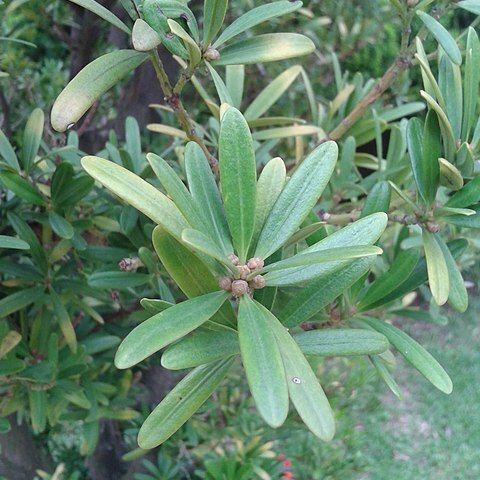Small tree c. 1-5 m high, possibly higher. Foliage buds 2-4 mm long, primary scales erect. Juvenile leaves up to at least 9 by 1.3 cm, acute or more or less rounded at the apex. Adult leaves linear, 4-7 cm (or as little as 2.5 cm on short side branches) by 5-10 mm, broadly acute or more usually rounded at the apex, sometimes with a small blunt apiculus, narrowing more or less abruptly at the base to a 2-3 mm petiole, slightly revolute; midrib above a distinct ridge 0.3 mm wide and 0.2 mm high. Seed-bearing structure on a 4-6 mm peduncle; foliola c. 1.5 mm long and early caducous; receptacle 12-15 mm long, reported to be red when mature. Seed with its covering 9-10 (including a small crest) by 6-7 mm.
A small shrub. The leaves are clustered near the ends of the small branches. They are leathery and narrowly sword shaped. They are 5-7 cm long by 7-12 mm wide. They are rounded at the tip and taper at the base. The edges curve over. The male cones occur singly, without stalks and are 2.5-3 cm lon by 8-10 mm wide. The female cones are long and fleshy. They are 10-13 mm long.


